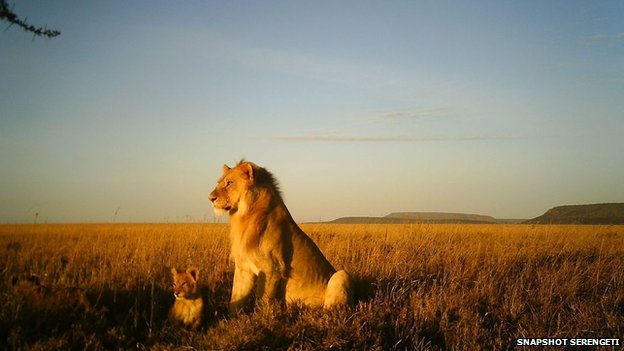Zoological crowdsourcing

Office workers, caught by the authorities during working hours while viewing photos online, received another successful excuse. Now they can tell the angry boss that they just wanted to help scientists explore the rare animals in the Serengeti National Park.
Speaking a little more seriously, the initiative of scientists from Zooniverse is not new. It lies in the fact that an archive of photographs taken by surveillance cameras in the territory of the Serengeti National Park in Tanzania was posted to the public. In recent years, scientists have installed hundreds of cameras equipped with motion sensors that register animals in the Serengeti. Since then, cameras have taken several million photographs, which far exceeds the ability of scientists to process them. Therefore, it was decided to attract ordinary Internet users to this.
')
Anyone can go to the specially created site snapshotserengeti.org , and after making just a couple of clicks, start viewing the photos, noting the animals that are captured on them. As a rule, we are talking about a consecutive series of 2-3 photos - just as many frames when cameras are activated, cameras installed in the Serengeti make it work.
The site interface is so simple that even a child can handle it (at first, of course, not without the help of adults). According to Chris Lintott (project manager), studies have shown that people without special education can quite successfully identify the types of animals photographed. To facilitate the process on the site there is an extensive system of hints.

First, the user has a list of animals that live in the Serengeti in advance, so the task is only to press the right button. Most likely, you can easily recognize a lion or a giraffe, and for more "difficult" cases there is a well-thought system of classification according to animal size, color, shape of horns, tails, and so on. A description of each animal and a list of species from which it can be confused; and if the photo finally baffles you, you can ask for help from the "colleagues" on the forum .
Due to this, recognition of the species of an animal sometimes turns into an exciting puzzle. “We hope that bright photos will make people participate,” say the authors of Snapshot Serengeti. According to them, the computer-aided automatic recognition systems currently available still give too bad a result for animals, so volunteers cannot do without the help of volunteers.
In addition to the research value, among the photos posted there are a lot of beautiful and funny pictures. There are special marks for photographs of people, as well as for “empty” frames. All this has generated a huge interest in the site, which allowed us to process more than 3 million photos in less than a week!
All submitted photos are available under the Creative Commons 3.0 license, and the site was created using HTML5. This is not the first such project organized by Zooniverse - similar online recognition systems were used by their specialists to process research in climatology and astronomy. It can not fail to impress how the simplicity and availability of Internet technologies allows you to organize such systems with a minimum of costs.
Source: https://habr.com/ru/post/162847/
All Articles